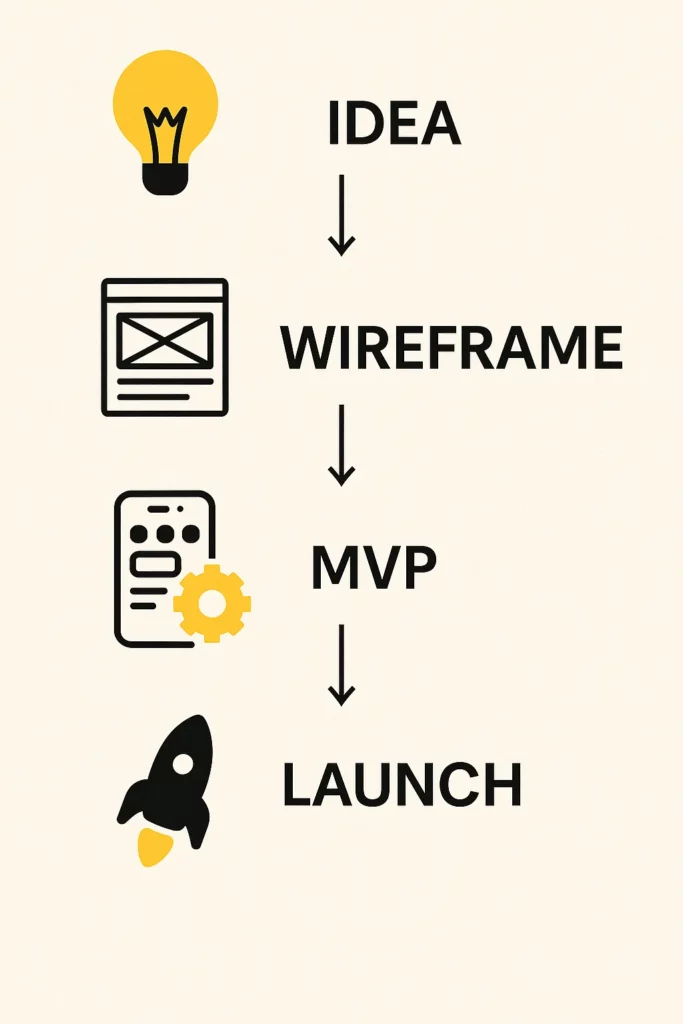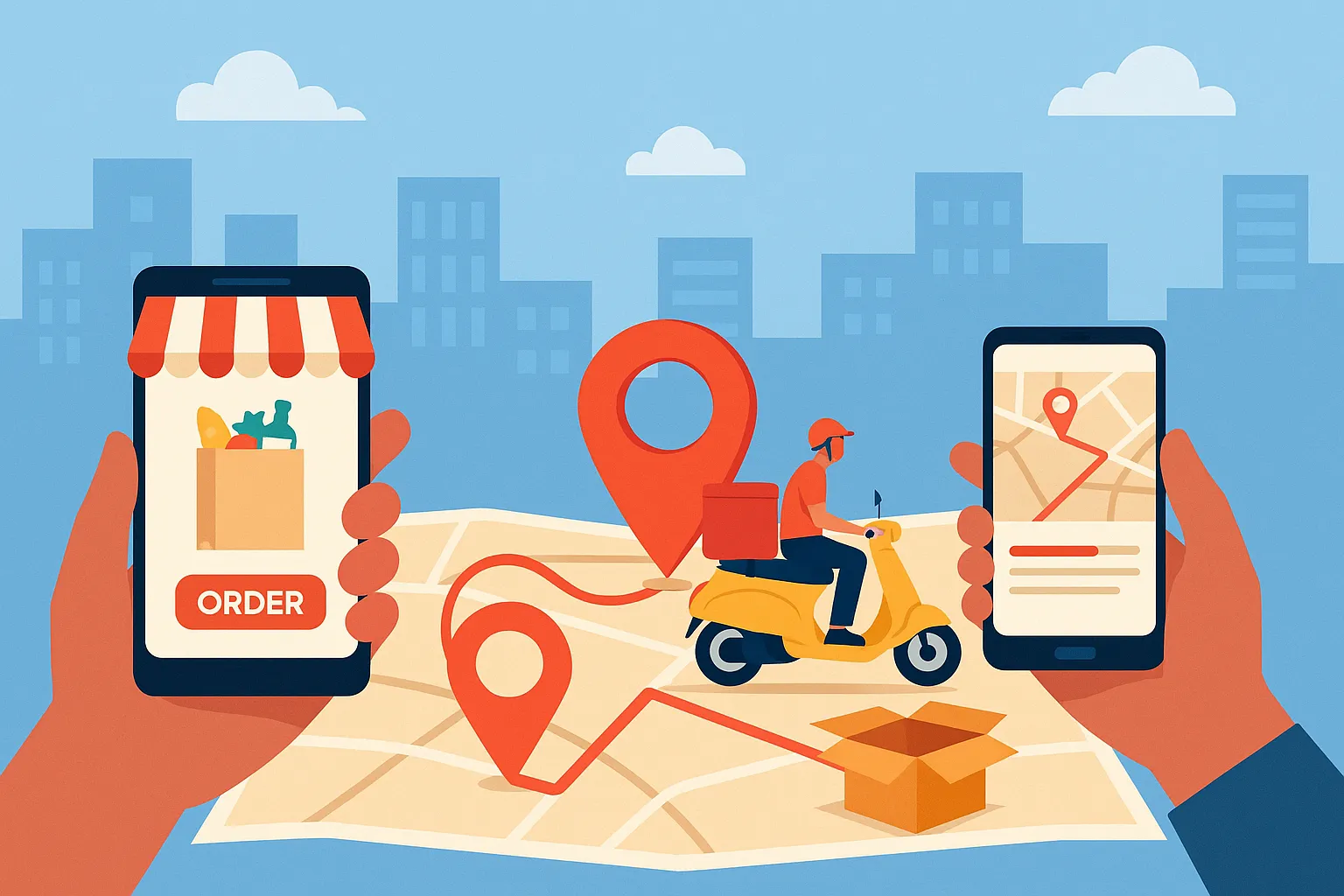In 2025, convenience is king. We want groceries at our doorstep, medicines in under 30 minutes, and a hot meal delivered before the show resumes on Netflix. That’s where hyperlocal delivery apps step in—bridging the gap between neighborhood vendors and impatient consumers like us.
What makes them so powerful? Speed, proximity, and personalization. Whether it’s a last-minute flower bouquet or emergency plumbing supplies, hyperlocal apps cater to immediate needs within a specific radius, often 3 to 5 kilometers. For businesses, it’s a game-changer. For startups, it’s a gold mine—if executed right.
I remember once ordering a cake an hour before a friend’s surprise party. Zomato couldn’t help. Swiggy Genie was overloaded. A local bakery with its own delivery app saved the day—and now I’m loyal to them for life. That’s the power of owning a hyperlocal ecosystem.
So in this guide, I’ll break down everything you need to develop an on-demand hyperlocal delivery app—from planning and development to features, monetization, and market fit.
What Is a Hyperlocal Delivery App?
Let’s keep it simple. A hyperlocal delivery service connects local sellers, service providers, or shops with nearby customers, ensuring fast delivery of products/services within a limited area.
Examples include:
- Food (like Dunzo or Swiggy Genie)
- Grocery (BigBasket Now)
- Pharmacy (1mg, PharmEasy)
- Courier/parcel (Pidge, WeFast)
- Essentials and errands (Zepto, Porter)
It’s called “hyperlocal” because the operations are extremely area-specific, often with real-time delivery from a store that’s just a kilometer away.
To dive deeper into launching your own hyperlocal platform, check out our guide on how to start an on-demand hyperlocal business.
Read more :- What is Dunzo App and How Does It Work?
Here’s How to Build a Hyperlocal Delivery App – Step-by-Step
Step 1: Define Your Niche and Audience
Don’t build an app for everyone. Start small and focused.
Ask yourself:
- What category are you serving? (e.g., groceries, meat, daily essentials)
- Who’s your audience? Working professionals, families, students?
- What’s your unique edge? 30-minute delivery, regional sourcing, eco-packaging?
Step 2: Core Features You Must Include

Read more :- What is Blinkit App and How Does It Work?
Here’s what your app absolutely needs to win hearts (and orders):
Customer App Features
- User registration/login
- Live tracking of delivery
- Search with filters (price, ratings, availability)
- Multiple payment modes (UPI, Wallets, COD)
- Scheduled delivery
- Push notifications (order status, offers)
- In-app chat/support
Vendor App Features
- Order management
- Inventory updates
- Real-time availability toggle
- Revenue dashboard
- Offer & discount creation
Delivery Agent App
- Route optimization
- Order acceptance
- Navigation integration
- Earnings tracking
Admin Panel
- User management
- Vendor onboarding
- Commission control
- Dispute resolution
- Analytics dashboard
Step 3: Tech Stack for Your Hyperlocal App
Your tech choices will decide how smoothly your app runs.
| Component | Technology/Tool Example |
| Frontend (App) | React Native / Flutter |
| Backend | Node.js / Django / Laravel |
| Database | MongoDB / PostgreSQL |
| Payment Gateway | Razorpay / Paytm / Stripe |
| Real-time tracking | Google Maps API / Mapbox |
| Notifications | Firebase Cloud Messaging (FCM) |
| Cloud Hosting | AWS / Google Cloud / Azure |
Go for cross-platform app development (React Native or Flutter) to reduce cost and time.
Step 4: Monetization Strategies
Here’s how your app can make money:
1. Commission-Based Model
Charge vendors a small percentage for every order completed via your app.
2. Subscription Plans
Offer premium memberships to vendors for added visibility, analytics, or marketing tools.
3. Delivery Fees
Charge customers based on distance, time, or urgency.
4. Advertising
Promote stores or products within the app for a fee.
5. White-labelling
Offer your platform tech to local brands who want to launch their own apps.
Step 5: Geo-Fencing and Hyperlocal Intelligence

This is where it gets smart.
You’ll need:
- Geo-fencing: Only show users vendors within a specific delivery range.
- Real-time inventory sync: Reflect only what’s available right now.
- Heatmaps & demand prediction: For better delivery planning and rider availability.
Advanced AI integrations can also suggest vendors based on time of day, previous orders, and even local festivals.
Step 6: Common Challenges & How to Tackle Them
Inventory Mismatch
Fix: Use vendor-side inventory sync APIs and auto-disable sold-out items.
Late Deliveries
Fix: Route optimization + AI-based time predictions + incentive model for riders.
Vendor Onboarding
Fix: Build a simple web dashboard for vendors to self-register and get verified fast.

Read more: How to Market an On-Demand Hyperlocal Delivery Service App Successfully After Launch
Bonus: Competitive App Comparison (2025 Snapshot)
| App | Category | Strength | Weakness |
| Dunzo | All-in-one | Fast deliveries, multiple categories | Limited availability in tier-2 cities |
| Zepto | Grocery | 10-min delivery, intuitive UI | Limited product variety |
| Swiggy Genie | Errands | Large delivery fleet | Pricing not transparent |
| Pidge | Courier | Secure & fast B2B delivery | B2C experience lags |
Discover our comprehensive delivery app solution tailored to streamline and scale your on-demand business operations
Read more :- know about Instacart App Works & Why It is Successful
Conclusion
Launching a hyperlocal on-demand delivery app isn’t just a tech play—it’s a logistics and trust game. You’re building bridges between small businesses and impatient consumers who expect speed, ease, and reliability. The startups that succeed will be the ones who stay laser-focused on their neighborhoods, not the whole map.
Start small. Go deep. Build loyalty before scale.
At Miracuves, we help innovators launch high-performance app clones that are fast, scalable, and monetization-ready. Ready to turn your idea into reality? Let’s build together.
FAQ: Hyperlocal Delivery App Development
Q1. How much does it cost to develop a hyperlocal delivery app?
The cost depends on the features, technology stack, and customization level you choose. With expert development, you can get a scalable, secure, and fast-to-market solution tailored to your business needs.
Q2. How is it different from regular e-commerce delivery?
Hyperlocal focuses on fast deliveries within a small radius using local inventory and real-time updates.
Q3. Do I need my own delivery fleet?
Not necessarily. You can onboard gig-based delivery partners or integrate with third-party fleets.
Q4. Which cities are ideal to launch such apps in India?
Start with metros (Bengaluru, Delhi, Mumbai) or growing tier-2 hubs (Indore, Surat, Kochi) with high digital adoption.
Q5. Can this model work in rural areas?
It’s harder due to logistics, but with proper community tie-ups, it’s possible.
Q6. What’s the best way to get vendors on board?
Incentivize early vendors with zero commission, free promotions, and hands-on support during onboarding.
Related Articles:
- Most Profitable Hyperlocal Delivery Apps to Launch in 2025
- How to Start a Restaurant Food Ordering Platform Business
- How to Start a Food Delivery Marketplace Platform Business
- How to Start a Regional Food Delivery Platform Business
- Is Building a Hyperlocal Delivery App Expensive? Here’s What Startups Should Know








